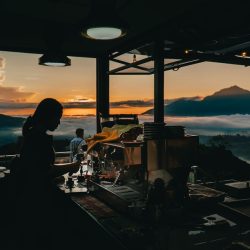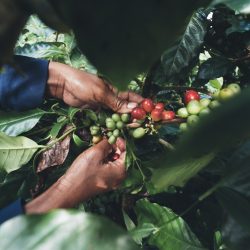What Coffee Labels Don’t Tell You: The Science Behind Coffee Processing
Have you ever noticed the labels on roasted coffee packaging? They often describe the process used and the taste notes of the coffee. But have you ever wondered: What do those processes really mean? And how do they influence the flavor in your cup?
From farm to your cup, coffee goes through multiple stages and each one plays a role in shaping the final flavor. This isn’t just marketing jargon. There’s actual science behind it, making coffee one of the most complex beverages in the world.
One of the most crucial stages is coffee processing or fermentation. It’s here where biochemical changes happen inside the bean—shaping acidity, sweetness, body, and aroma. There are many types of processing methods, both traditional and experimental. The method chosen often depends on the environment, coffee variety, and the desired flavor profile.
But before we dive into the actual process, let’s take a quick look at what’s inside a coffee cherry.
Anatomy of a Coffee Cherry
A ripe coffee cherry consists of:
- Outer skin
- Pulp: juicy flesh full of sugar and water
- Mucilage: slimy layer that aids fermentation
- Parchment: a thick papery protective layer
- Silver skin: a thin paper skin that attach to the green bean
- Green bean: the seed we roast and brew
Each layer plays a part in the final taste, depending on how it’s processed.
1. Natural Process
The natural (or dry) process is the oldest and most eco-friendly method. It’s also a favorite among many farmers because it requires (almost) no fancy machines. Coffee cherries are picked, sorted in water, and then sun-dried whole—with the skin and pulp still intact.
Because the sugars in the pulp stay in contact with the bean during fermentation, natural coffees tend to be sweeter and fruitier, often with notes like strawberry, pineapple, or tropical fruit.
However, this process is weather-sensitive and requires careful drying to avoid mold or over-fermentation, which can lead to funky, winey, or unpredictable flavors. While not for everyone, natural coffee has a strong fan base. At Eco Bike Coffee, our natural processed coffee is a best-seller among those seeking bold, tropical profiles.
2. Washed Process
The washed (or wet) process is more technical and controlled. After harvesting, the cherries are depulped using a machine, removing the skin and most of the pulp. The beans are then soaked in tanks of water to loosen and ferment the mucilage. Next, the beans are washed thoroughly and dried.
Since there’s less sugar contact, washed coffees tend to be cleaner and brighter, allowing the natural character of the bean to shine. There is also a higher level of acidity due to increased enzymatic activity in the green beans when exposed to air. Many specialty coffee lovers prefer this process for its clarity and complexity.
3. Honey Process
Honey processing is a hybrid method between washed and natural. Cherries are depulped, but instead of being fully washed, the sticky mucilage is left on the bean and dried directly under the sun.
The result? A sweet, balanced cup that often has fruity and nutty notes with medium acidity. The name “honey” refers to the sticky texture and the color, not because actual honey is used.
There are several types based on how much mucilage remains:
- Yellow honey: ~25% mucilage
- Red honey: ~50%
- Black honey: 100% (no mucilage removed)
Though not as widely known as natural or washed, honey-processed coffee is highly prized among enthusiasts looking for something in-between.
So, Which Process Is Best?
There’s no single “best” process—each method has its magic.
- Natural: bold, sweet, fruity
- Washed: clean, acidic, complex
- Honey: balanced, smooth, mellow
At Eco Bike Coffee, we offer a variety of processing methods—meticulously crafted from high-altitude farms in Kintamani—to give you a wide spectrum of flavor and experience.
Whether you’re a seasoned taster or a curious beginner, your job is simple: take a sip and appreciate the journey behind every cup.
Oh, and did you know some experimental processes like koji fermentation use spores that cost millions per kilo? That’s the price of pushing the boundaries of flavor.



